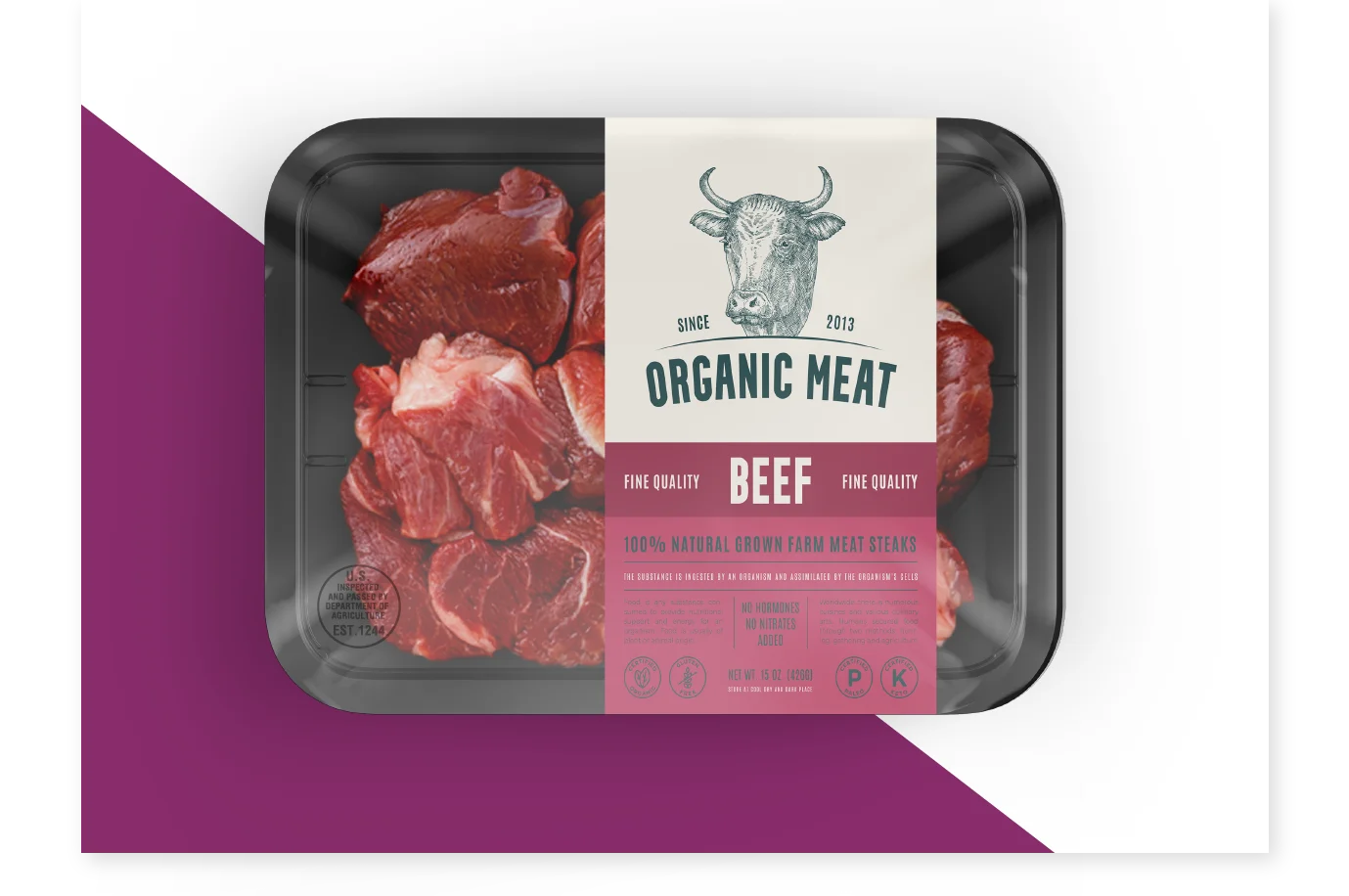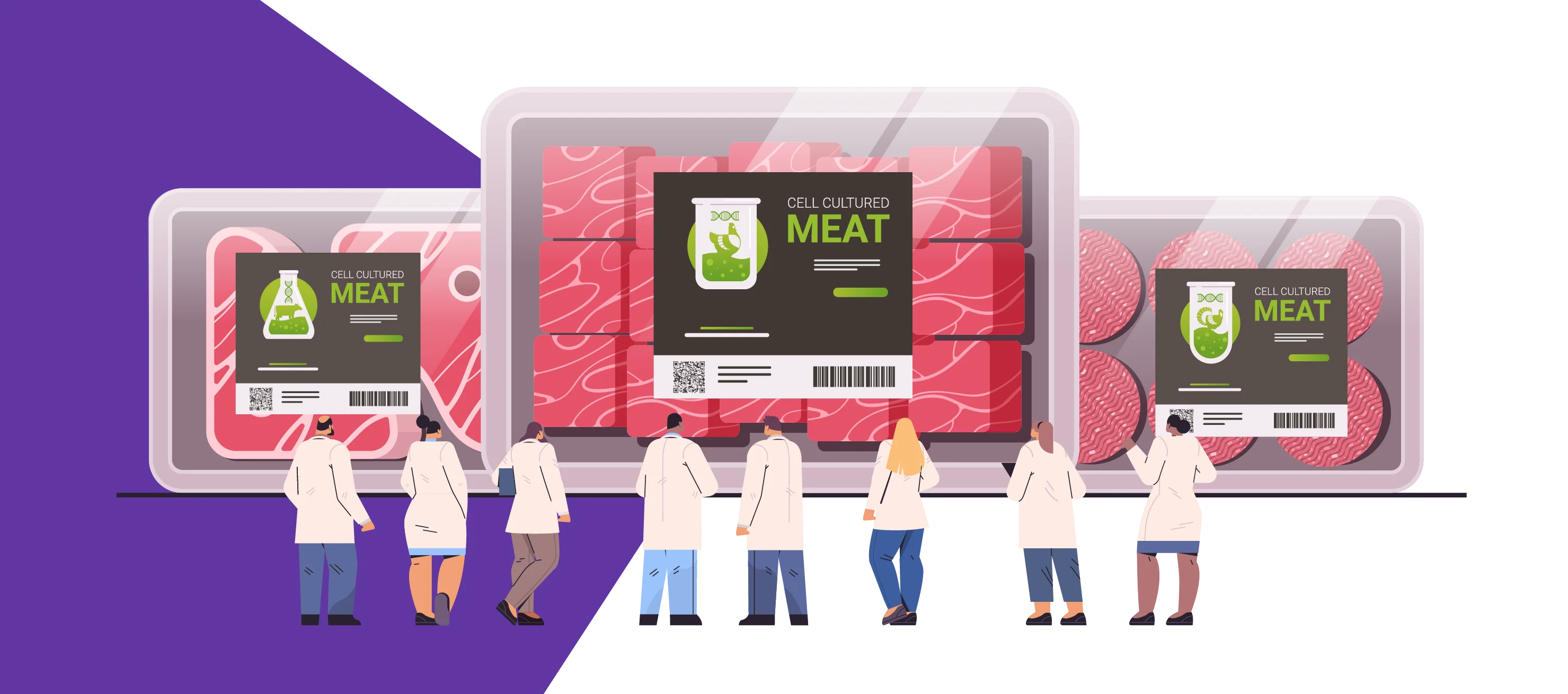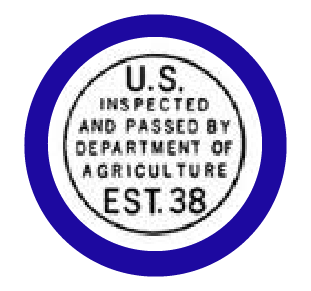No products in the cart.
A guide to the USDA meat stamp


A Guide to the USDA Meat Stamp
What Do These Stamps Mean?
Meat inspection is a mandatory part of the meat industry in the United States. However, the questions of who inspects the meat, what this stamp means, and what is approved or not still may remain as a question with this fact.
In the U.S., is meat inspection required?


The Federal Meat Inspection Act (FMIA) requires all commercially sold meat to be inspected and labeled properly. Meat inspections assure the consumer the select of meat they purchase at the market is safe and clean for human consumption at the point at which it is purchased. This includes the inspection of the live animal, carcass, internal organs, plant facilities where it is processed, equipment, personnel, and transportation. Therefore, it is imperative that meat and meat products are unadulterated or misbranded.
How to grade beef: prime, choice, and selection?
While grading beef is optional and voluntary after beep passes inspection, not all federal or state inspection grades are the same. There are eight quality grades within the meat grading system, and they are from higher grades to least highest: Prime, Choice, Select, Standard, Commercial, Utility, Cutter, and Canner. However, most consumers are familiar with the top three grades Prime, Choice, and Select.




USDA Prime Grade
USDA Prime is the highest quality grade, with a small percentage of total cattle numbers achieving this grade. The minimum degree of marbling required for carcasses of this grade is "Slightly Abundant." These are the highest-priced cuts and are typically sold at restaurants or "full service" cases at grocery or butcher stores. You can think of these as being certified tender.


USDA Choice Grade
USDA Choice is the second highest quality grade and is the most frequently produced. This grade has a minimum degree of marbling and is graded when marbling is "Small." This USDA certified cut is very tender and juicy and makes up the largest group of carcasses.


USDA Select Grade
USDA Select is the second most frequently quality grade produced and has a minimum amount of marbling as determined by "Slight." This cut tends to be leaner both internally and externally and is commonly found in retail stores as the "common" tender beef purchased for everyday use.
How is the grade of beef determined?
USDA grades are determined based on the animal's maturity when harvested and the amount of intramuscular fat (marbling) in the surface of the ribeye muscle seen between the 12th and 13th ribs. While most cattle in large facilities are processed between 9-30 months of age, the marbling is the determining factor in the quality grade.






USDA Quality Grade comes from the amount of marbling observed at one location within the carcass across every cut of meat from that carcass. Therefore, marbelization is important as it gives the beef tenderness and added flavor.
As the animal matures (ages), the meat becomes tougher and leaner, so the cattle's age dictates the beef's tenderness. Thus, the USDA grade showcases the quality of the beef based on the grade and the amount of usable lean meat when the beef is graded.
What does beef grade not tell you?


Beef grades, while they do offer some information on the meat itself, some factors are not considered by the USDA. This includes factors of the animal's diet, including grass-fed or grain-finished and if the animal was raised in a pasture or not.
In addition, it is important to note that grass-finished beef will not be graded under Prime as they are leaner and do not achieve the USDA's Prime Grade requirements for tenderness, juiciness, and flavor.
Types of Meat Inspection stamps your products may need


Raw Meat
Inspection mark on raw meat from beef, pork, lamb, or goat.


Poultry
Inspection mark on poultry that is raw or processed.


Packated and processed meat
Inspection mark on packaged and processed meat containing beef, pork, lamb, and/or goat.
Understanding Meat Stamps
While it may seem daunting to understand what the USDA stamp means, we hope this article has given insight into what it means and how and why it is used. CarePac is here to answer any further questions you have about the USDA meat inspection stamp and its use on packaging.
Tags

